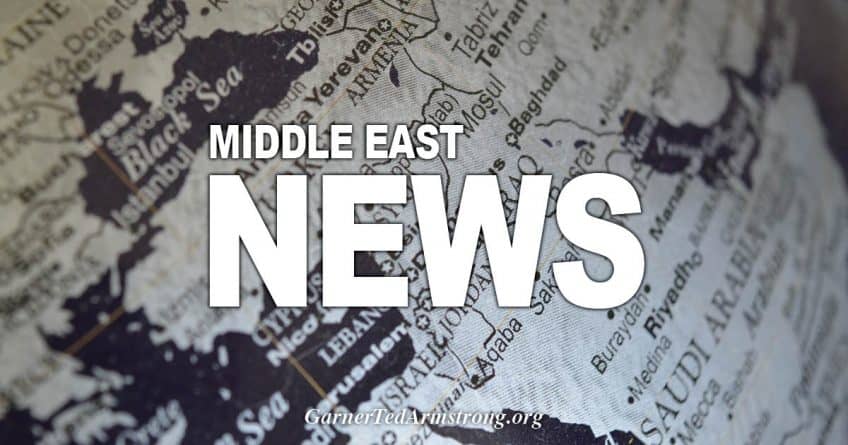Even with only 200 American troops in Syria, the United States maintains its management role in the conflict.

Vehicles belonging to the US-backed coalition drive down a road in Syria’s northern Deir Ez-Zor province, February 21. (AFP)
US President Donald Trump’s decision to withdraw US troops from Syria on the grounds they had completed their task of eliminating the Islamic State upset the plans of the various external actors in the conflict, including Russia, Turkey and Iran.
Trump’s announcement prompted Turkey to postpone its planned deployment of troops along its border with northern Syria. Ankara had laid the groundwork for that move with a series of declarations and threats. Its intention was to establish a secure zone and eliminate the presence of the Syrian Democratic Forces (SDF), which Turkey sees as a national security threat.
The Russians were sceptical of Trump’s announcement and feared its ramifications, especially the possibility that it may be a step to induce further Russian involvement in the Syrian conflict.
Moscow was forced to follow Turkey on two issues. The first was maintaining the Idlib region and its countryside as a zone of de-escalation, meaning that it would have to relinquish the control of the zone to Turkey.
The second issue concerned Turkish plans for a safety zone. Russia must go along with Turkey on the issue but through terms of the 1998 Turkish-Syrian Adana agreement, which authorizes Turkey to deploy troops 5-10km inside Syrian territory, as opposed to the US plan that proposed to the Turks a region 20-30km wide.
Iran is the biggest loser in these developments. The phase coming after the war on terror, whether against the Islamic State or against al-Nusra Front, will necessarily mean restricting Iran’s influence in Syria.
That path will go through either a constitutional committee or through the workings of the Geneva process, especially now that there is a new UN envoy. Closing the circle on Iran in Syria coincides with an international, US and Israeli campaign aimed at clipping Iran’s wings in Syria and Iraq and slapping it with sanctions, considering that it is one of the biggest sources of instability in the Middle East.
It follows from all this that the Syrian conflict is at a turning point for all the involved parties. The post-war-on-terror phase is going to be quite different from the war and pre-war phases. The establishment of the safe area in northern and north-eastern Syria and the definition of the Turkish role there will also constitute a new development.
The coming phase will reveal the following new features:
First, the current distribution of the military forces in the Syrian territory will remain in place. Turkey will likely remain in the north-west — in Idlib and its countryside.
The United States, with its decision to maintain a force of about 200 troops, will be east of the Euphrates at Al-Tanf base in Homs, guaranteeing Turkey’s security on the one hand and the SDF’s on the other.
The Syrian regime will remain in control of western and central Syria because of the military support of Russia and Iran.
Southern Syria, however, is going to be under indirect Israeli influence.
Second, this arrangement of forces means that the rules of the conflict will change. The only point of contention that could cause limited military engagement remains the Idlib region, especially if Turkey does not persuade Russia to let it manage Idlib and the forces therein, especially al-Nusra Front.
Third, this situation indicates the diminishment of the Iranian role in favour of Russia. It is known that it was the intensification of the military conflict that provided cover for the entry of Iran-supported militias from various countries into Syria. The abatement of the military conflict will diminish that, especially with Russia, rather than Iran, proving to be the regime’s foremost protector. Moscow, not Tehran, emerged as the party most in control of proceedings in the Syrian conflict.
Fourth, and even with only 200 American troops in Syria, the United States maintains its management role in the conflict. This explains how Russia can flex its muscles and impose a military presence in Syria but cannot transform this presence into a meaningful political investment, which shows its inability to restore political stability, resettle refugees or finance reconstruction.









